How to Hold Binoculars Steady: Keep skywatching for longer
Check our top tips for keeping your binoculars steady, eliminating the shakes and gaining a clear view of the heavens
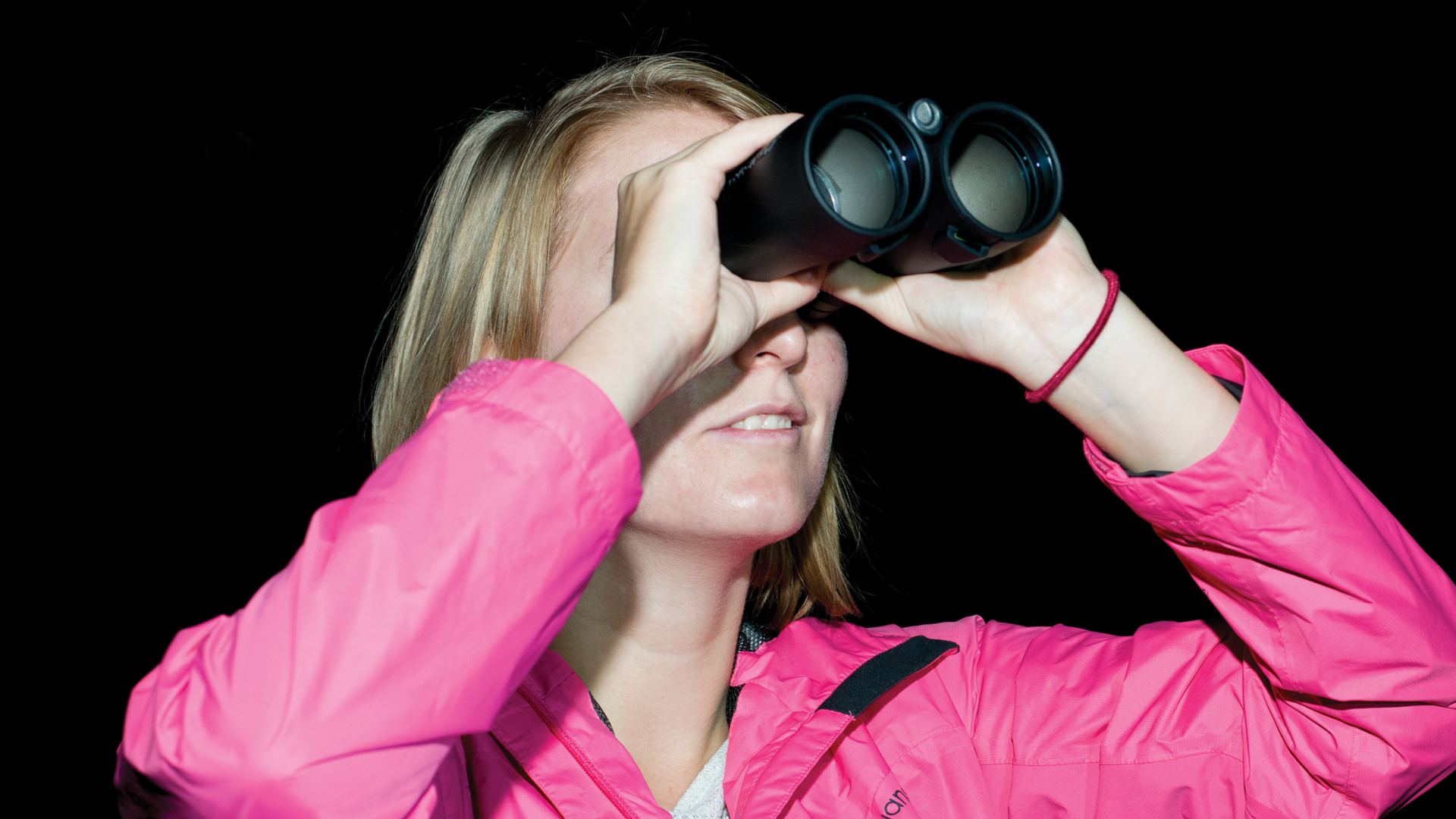
Binoculars are a brilliant tool for astronomy, but holding them steady can be a bit of a challenge. Laugh, but knowing how to hold binoculars steady is a skill, and can significantly extend your skywatching sessions. Even lightweight binoculars start to feel heavy after a few minutes and, combined with the stiff neck that can come from looking upwards, it can make the whole star gazing experience less than comfortable. Thankfully there are lots of easy ways to solve this problem.
When choosing the best binoculars for astronomy, it's easy to assume that more magnification is better – but higher power optics are more difficult to hold steady. You might hold 8x binoculars fairly easily, but find 10x ones a bit wobbly. Move up to 12x or 15x and the effect is worse, and almost impossible to use without some support.
That support doesn't need to be expensive at all, although there are some pretty cool options for those with deep pockets too. Here are the techniques and tools we recommend for holding binoculars steady.
- Related: How to clean binoculars
Get a grip on your binoculars
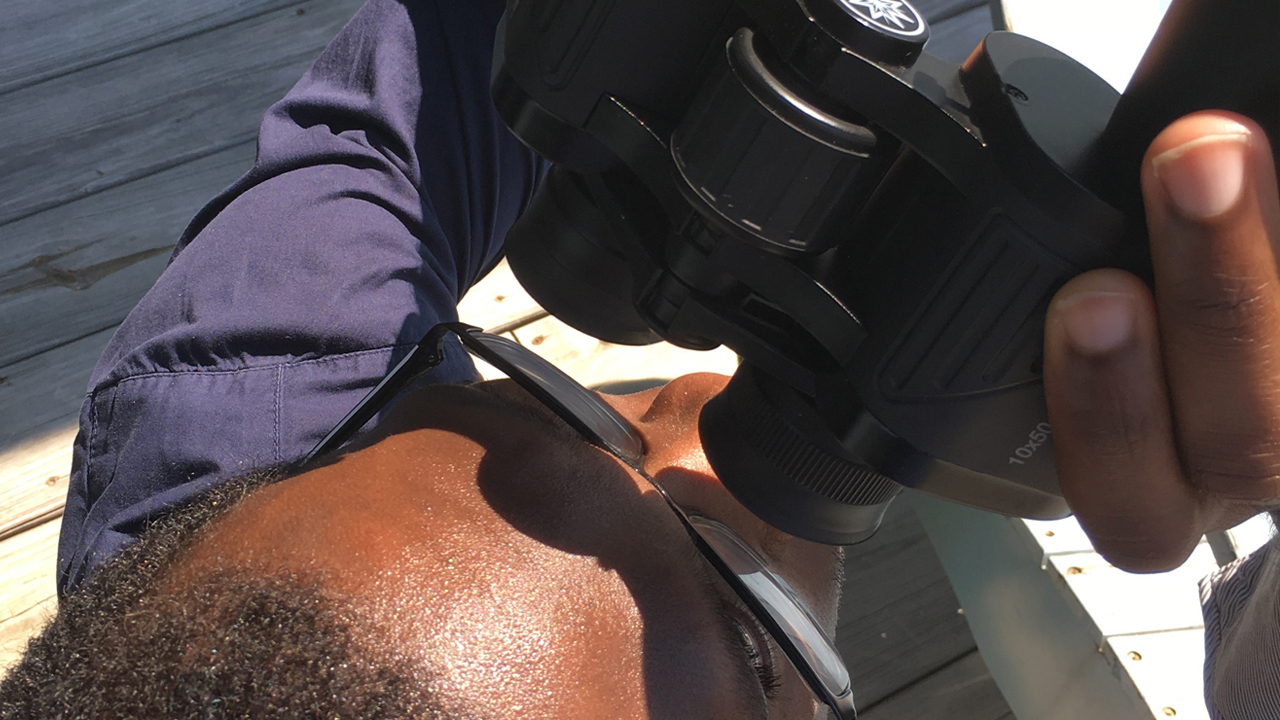
Simply using the correct grip can make a big difference. Most people instinctively hold binoculars in the middle, one hand on each tube. This is convenient for terrestrial viewing – birdwatching and so on – and makes focusing easy because the focus wheel is under the fingers. When looking upwards, though, this posture quickly tires the arms.
Instead, try holding your binoculars close to the eyepieces. You can rest your thumbs and forefingers against your face, providing extra support and helpfully blocking out stray light coming from the sides – like having blinkers. You may have to use your third or little fingers for focusing.
A third type of grip can work well, especially with higher power binoculars: use both hands to support one tube, preferably the one on your dominant eye. The other tube will rest on the back of your hand, and you may be able to tuck your elbows in to your chest. Not the most flattering pose, perhaps, but it'll save your arms.
Some extra support may be had by using the binoculars' neck strap, looped beneath your arms, a bit like the way a rifle shooter might. Applying some tension to the strap gives more stability to the binos.
Elbows are the key
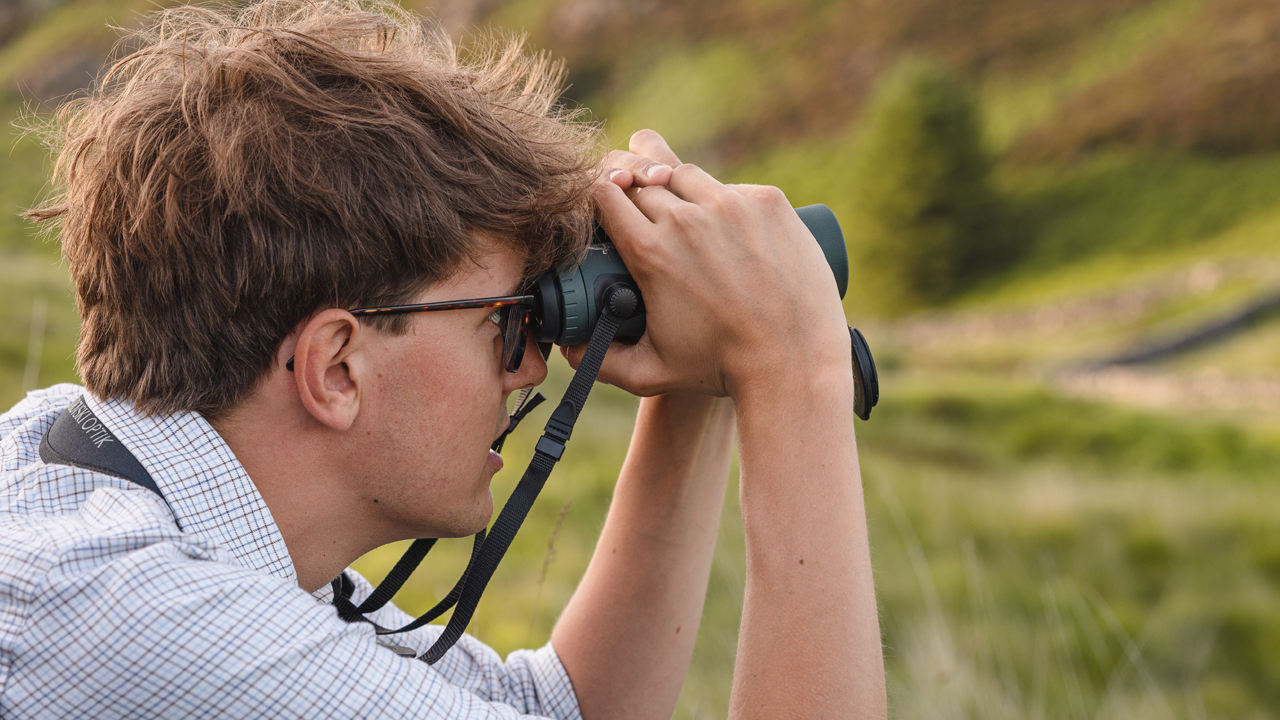
If you plan to observe the skies for any length of time, it's worth putting out a lawn chair or sun lounger. Choose one with good armrests, to support your elbows. If the armrests are a bit low, put a big cushion or pillow across them – this has the added advantage of helping you keep warm!
Slightly less cozy, but just as useful, is a home-made H-frame. You will need three lengths of timber and two bolts, arranged into an H where the crossbar is at chest height when sitting. Place this across your chair, and hey presto – instant elbow support.
If you don’t have a chair or lounger available, make use of your surroundings. Simply sitting on the ground, or even lying down, can make observing much less tiring. Binoculars will be easier to hold steady if your elbows are supported on your knees while sitting, and finding a wall or tree to sit against will help your back too.
The disadvantage, of course, is that the ground may be cold or wet. You may find you stay warmer for longer by sitting on your coat or jacket, rather than wearing it.
The old walking stick trick
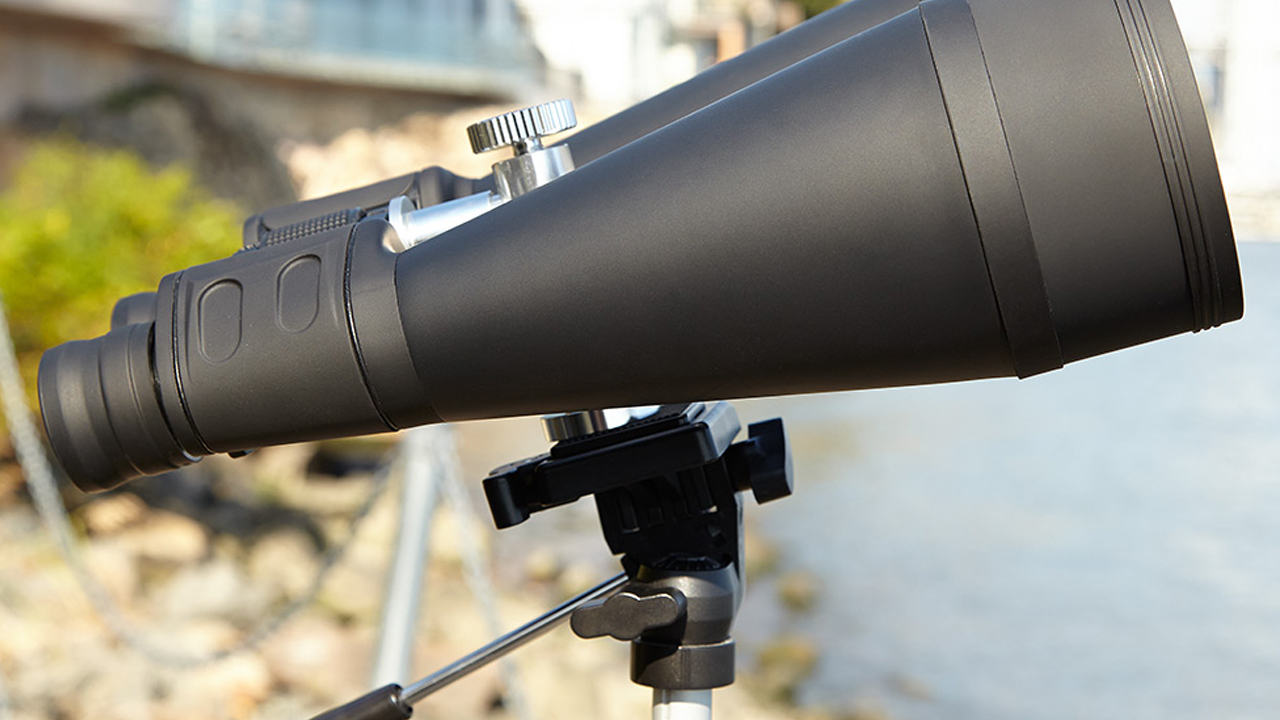
A tripod is an inherently stable platform, but can be a bit cumbersome to carry around. But here's the thing – you have two-thirds of a tripod with you at all times. All you need is to add a third support to your own two legs.
The old walking stick trick is commonly used by hunters and bird watchers to help support binos and telescopes when out in the wilderness. In astronomy we tend to be looking up rather than out, so a walking stick may just be too short. Any sort of longer stick or monopod can be used, and a simple domestic broom can be surprisingly useful.
A soft bristle brush with a long handle is best. Use it upside-down, with the bristles at the top and facing away from you. The shaft is your 'third leg', while the bristles provide an adaptable soft mount for your instrument.
For a bit more convenience, consider investing in a monopod. These will extend to a suitable height, and are much lighter and easier to carry than a tripod. Even a short monopod is helpful if you can find rock, log, or table to rest it on for that added elevation.
Another trick is to place a sling around your neck – an old scarf is ideal – and use this to support a short monopod. This takes the weight off your arms.
- Related: Best Telescopes - perfect for more deep-sky stargazing
Mounts and gadgets
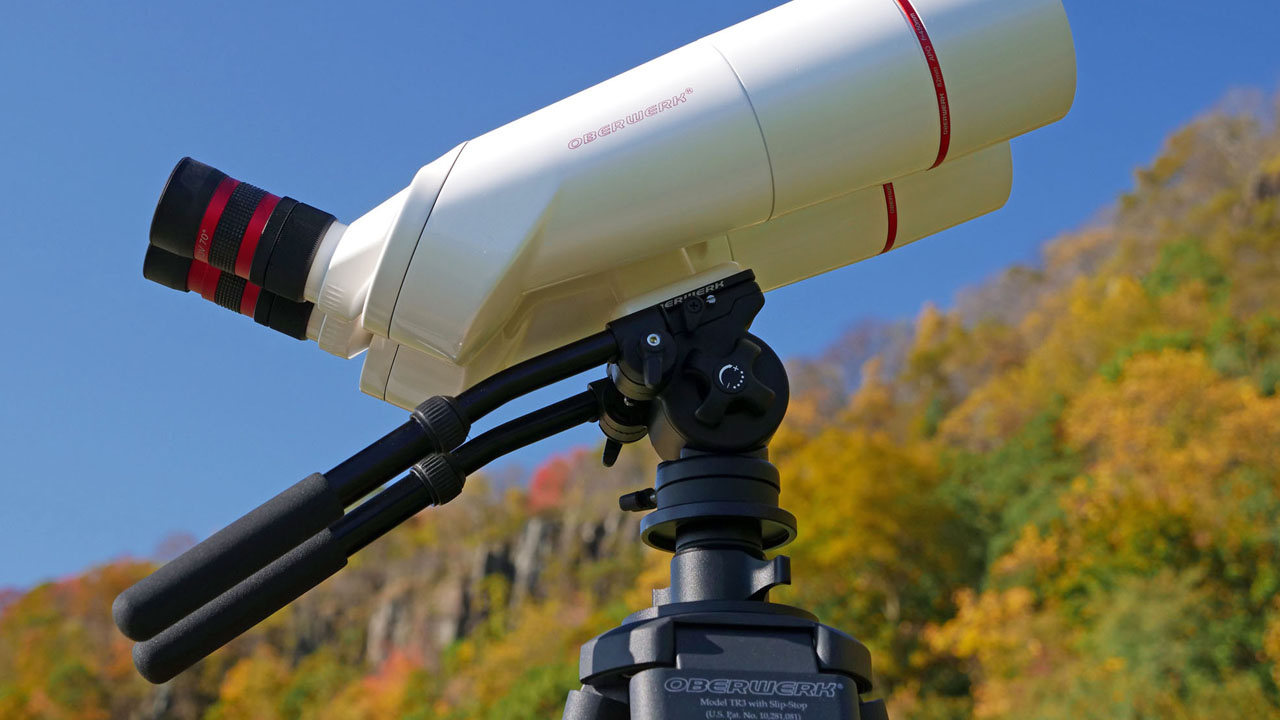
Some binoculars come with a standard, quarter-inch socket to connect to tripods and monopods, but if not an adapter is an inexpensive purchase. Simple L-bracket adapters screw into a threaded socket at the front of the binoculars' main hinge, although not all pairs have this socket (it may be hidden behind a cover plate). Otherwise a universal adapter can be bought or, with a little ingenuity, made. Bungee cord is your friend.
Another inexpensive trick is to view through a mirror. Make sure it is really clean, and place it on the ground or (even better) on a table. Holding binoculars to look down is much less tiring, and the table provides elbow support. The view will be flipped of course!
For a truly satisfying binocular astronomy experience, at a price, consider a parallelogram mount. These hold binoculars clear of the tripod, making access easier, and can be adjusted up and down without losing the target – great for sharing the view with others. If you need more tips, we have an additional guide to stargazing with binoculars.
Finally, if money really is no object, how about a pair of image stabilized (IS) binoculars? Various types are available, some using purely mechanical internal linkages and some with gyroscopes and fancy electronics, but all will instantly compensate for any shaky hands to deliver a steady image to the eyes. They are often waterproof, too.
This high tech solution comes at a price, or really two. Not only are they expensive, they are also heavier than equivalent non-stabilized binos. Your arms, and your pocket, may ache as a result.
Join our Space Forums to keep talking space on the latest missions, night sky and more! And if you have a news tip, correction or comment, let us know at: community@space.com.
Get the Space.com Newsletter
Breaking space news, the latest updates on rocket launches, skywatching events and more!
Russ Swan is a UK-based freelance science writer and author with a love of all things related to space and aviation. He built his own 100mm refractor telescope from some bits found in a military surplus store, and once had lunch with Neil Armstrong. His popular science book The Physics Behind… explains not just how the universe works, but why. He tweets (occasionally)!











